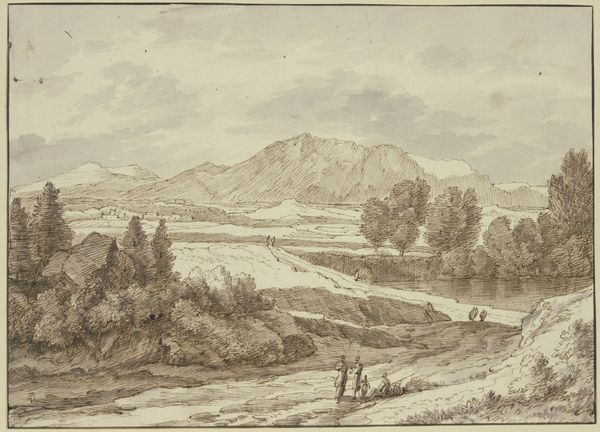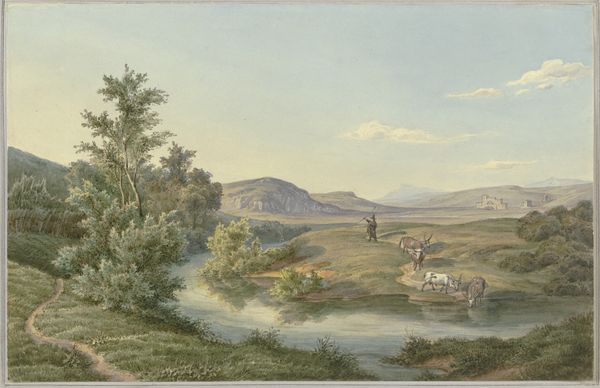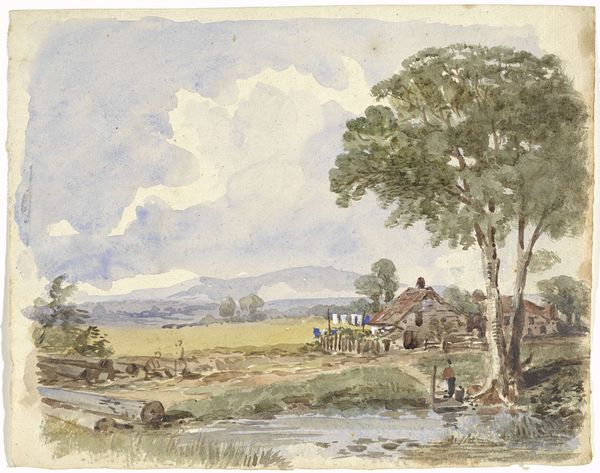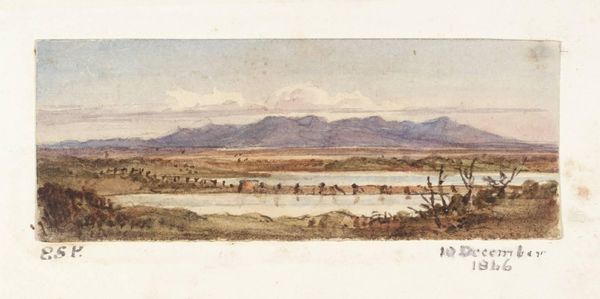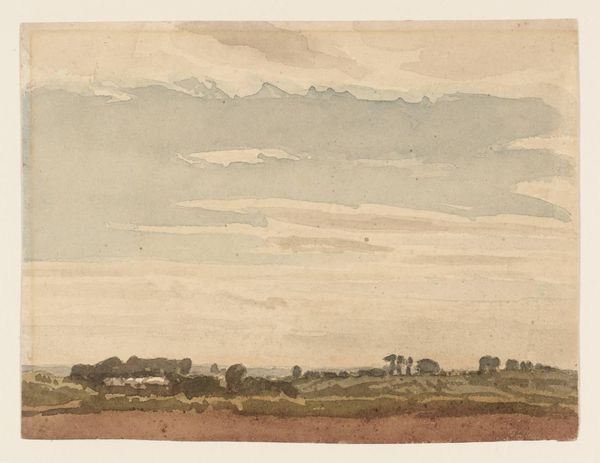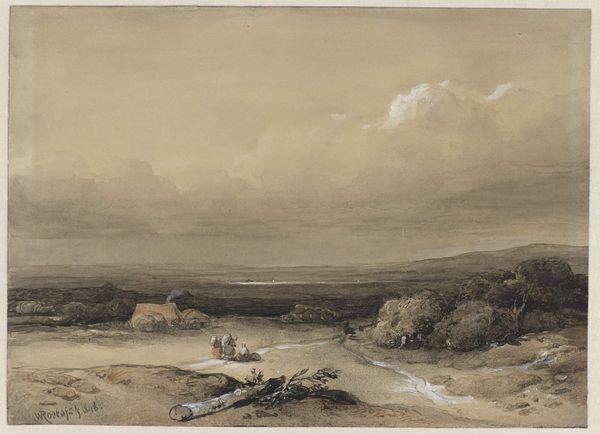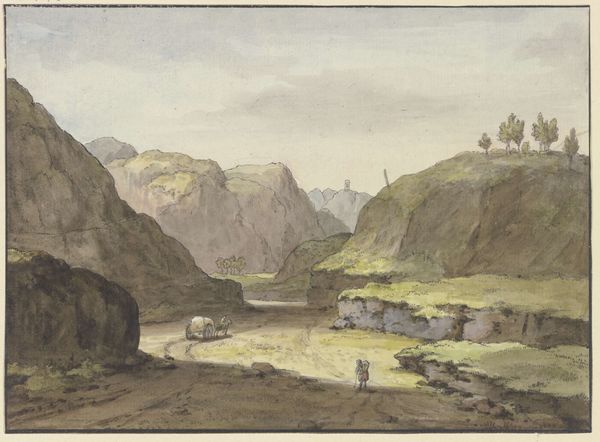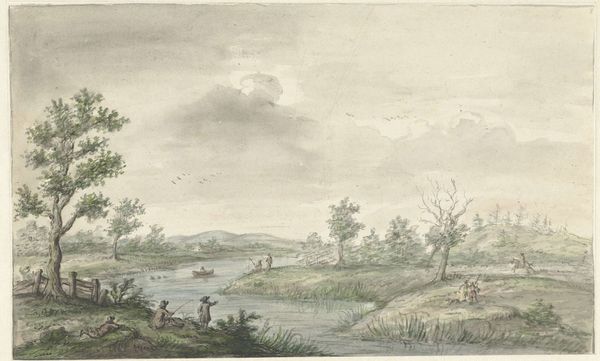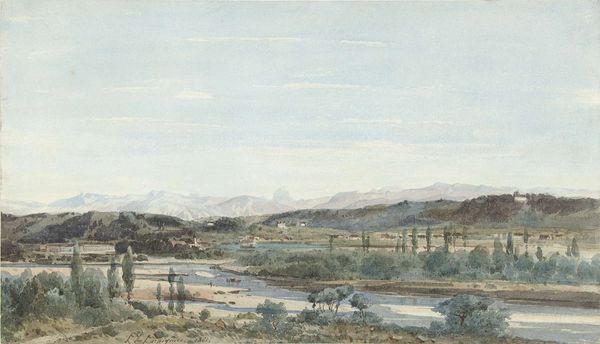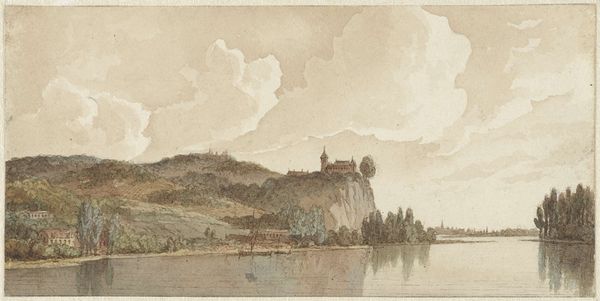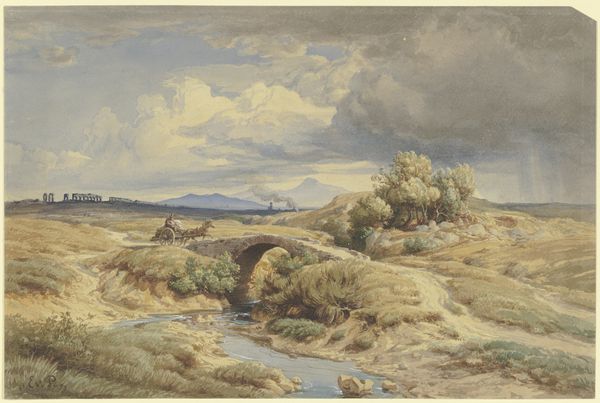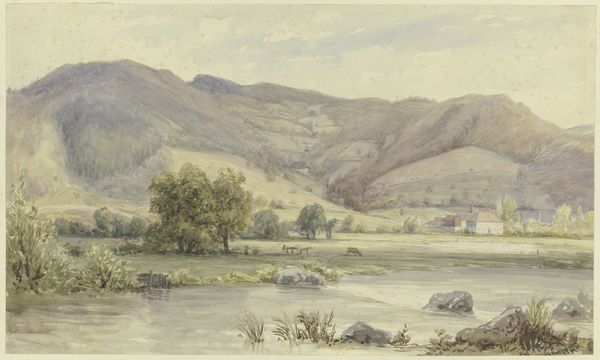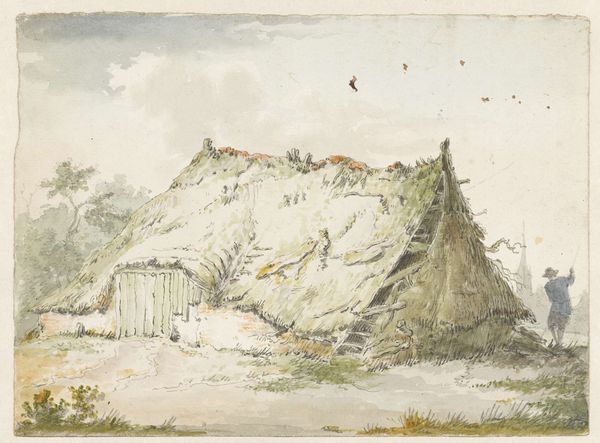
plein-air, watercolor
#
lake
#
toned paper
#
impressionism
#
plein-air
#
landscape
#
watercolor
#
watercolor
#
realism
Dimensions: height 142 mm, width 218 mm
Copyright: Rijks Museum: Open Domain
Curator: Here we have Willem Cornelis Rip’s "Wieldersche meer te Gelderland," possibly painted between 1874 and 1878. It's a watercolor piece, likely created en plein-air. What’s your first impression? Editor: The muted tones immediately give me a sense of tranquility. The hazy atmosphere, the grazing cattle… it evokes a feeling of pastoral quietude and an idealized relationship between humanity and nature. Curator: Absolutely. Rip was painting during a time of immense social and political change. The rise of industrialization brought with it anxieties about the loss of rural life, the shift in labor dynamics, and evolving power structures within communities. How do you think this plays out in the materiality itself? Editor: Well, watercolors have a directness about them. The portability allows the artist to be physically present within the landscape and there is an unmediated, swift record of nature which mirrors its own volatility. It also mirrors the labour, moving from urban environments to rural. It gives an authenticity lacking in larger oils done within studios. Curator: Right. And that search for authenticity, I would say, becomes almost a form of resistance against the homogeneity of the rising industrialized landscape, both physically and socially. Look how deliberately Rip composes the scene. He positions us to gaze outwards, drawing us in through reflections. Editor: The material constraints, however, influence the composition significantly. Watercolour paintings demand spontaneity and capturing the right tone in the instant. There are no revisions with plein air art. This gives it a fleeting quality, emphasising the change and ephemerality of the social relations Rip would be witnessing during this shift. Curator: That’s interesting! Perhaps the cows symbolise labour’s shift and the landscape represents that search for freedom from the changing political milieu. This piece invites contemplation about our connection to the land, the social significance we attached to labour during the rise of machines, and the search for a more grounded way of life. Editor: For me, the emphasis lies within how Rip uses materials in order to produce a piece reflective of labouring environments, and thus create social meanings within the shift toward modernity. Curator: Indeed, seeing how material practices and socio-historical forces intersect in artworks such as Rip’s gives a layered experience and offers insight into the shifting sands of the era.
Comments
No comments
Be the first to comment and join the conversation on the ultimate creative platform.
